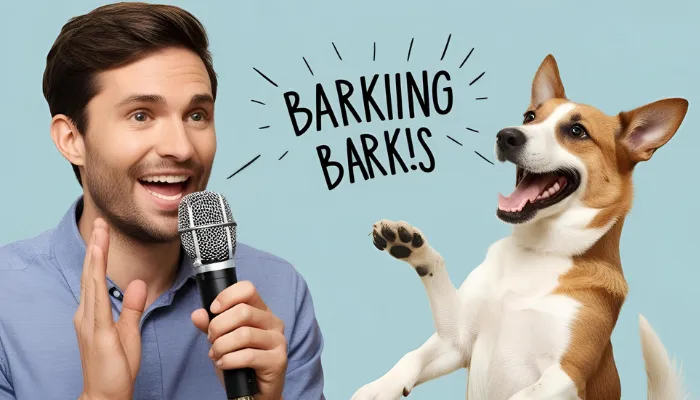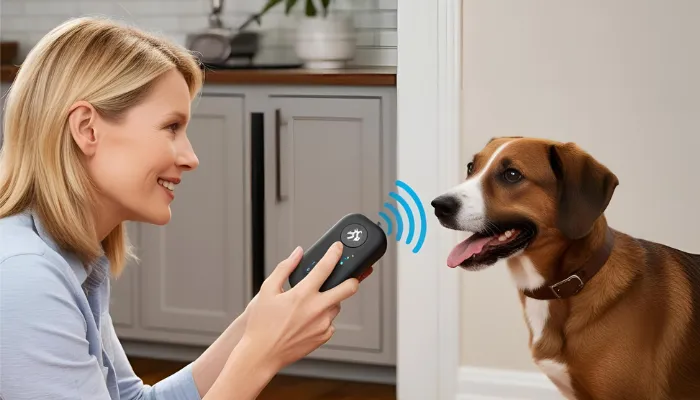Have you ever tried to figure out how to speak dog language translator and interpret the messages that your pet is trying to convey? When it comes to communication, dogs have mastered it but they have their own language which is hard for humans to understand. They have a wide range of vocabulary that consists of barks, tail wags, and even ear position.
In this article, we will explore the world of canine communication, and learn how to speak dog language translator to help bond with your pet. Whether you are a seasoned dog owner or a new pup parent, this guide will help you speak your dog’s language with confidence.
Have you ever wished for a dog translator? With the right approach, understanding your furry friend can feel just like using a real dog translator!

How to Speak Dog Language Translator: Step-by-Step Guide
Now you understand the basics, let’s tackle how to speak dog language translator deeply. Make sure to follow the steps closely to interpret and engage with your canine buddy. Ensure their messages are understood and serve to respond correctly to your pet.
Step 1: Observe Your Dog’s Behavior
Make sure to observe your dog in varied situations. Look at how they react to new people and other animals as well as different settings. This will assist you in spotting trends in their behavior.
Step 2: Learn Common Dog Signals
Familiarize yourself with the most common dog signals. Here’s a quick reference table:
| Signal | Meaning |
|---|---|
| Tail wagging slowly | Uncertainty or caution |
| Tail wagging fast | Excitement or happiness |
| Ears forward | Curiosity or alertness |
| Ears pinned back | Fear or submission |
| Low growl | Warning or discomfort |
| High-pitched bark | Playfulness or excitement |
Understanding these signals is key to mastering how to speak dog language translator.
Step 3: Respond Appropriately
After your dog displays signs that you have already understood, reward him in a manner that maintains or further improves your dog’s good manners and behaviors. For instance:
- If your dog moves their tail and comes toward you in a relaxed manner, show some love or cookies to your dog.
- If your canine has already started to show discomfort signs like growling, then give some distance and evaluate the situation.
Step 4: Use Consistent Commands
Dogs learn best with repetition. Use simply understandable words like ‘Sit’, ‘Stay’, ‘Come’ and other phrases that are clear to express what you expect from the them. You must use praise when giving the commands to help the dog learn appropriate behavior.
Step 5: Practice Active Listening
Just like for humans, for dogs not being listened to can be challenging. Always be observant and when knowing that the dog is communicating, act in a manner that you do not shy away from the communication. It will help foster confidence and deepen the bond you share.
By practicing these steps consistently, you can strengthen your communication with your dog and create a deeper, more trusting bond.

Techniques to Improve Dog Communication Skills
Learning how to speak dog language translator effectively involves knowing what to observe and other tools and techniques. Below are some aids that can assist you through these steps:
- Dog Training Apps
- You can find applications that are focused on helping dog owners communicate with their dogs. These apps usually have instructions, training, tips, or even bark analysis for translation.
- Books on Canine Communication
- There are books such as Patricia McConnell’s The Other End of the Leash or Stanley Coren’s How to Speak Dog that many recommend for insight on pet dog behavior and communication.
- Professional Training Classes
- Enrolling into a pet obedience school allows you to have practical lessons and professional help at the same time. The instructors will show you how to read your dog, which signals it gives and how to communicate with it effectively.
- Body Language Charts
- A body language chart should be kept nearby so that you can check for signals from your dog. It is very useful for novice dog owners.
With these tools and techniques, you can enhance your ability to understand and communicate with your dog, strengthening your bond and improving your interactions.
Common Mistakes in Dog Language Translation
When using the how to speak dog language translator, learning mistakes can happen. Here are a few pitfalls to avoid:
- Misinterpreting Tail Wags
- Different types of tail wags indicate different things. While a slow wag often denotes uncertainty, a fast wag usually means excitement. Remember to be attentive to the context.
- Ignoring Vocal Tones
- Grits may come with different tonalities, and each is used for different emotional reactions. For instance, a dog grunt may sound playful at times, but if it’s accompanied with fierce low growls, it’s definitely uncomfortable.
- Overlooking Subtle Cues
- You may use a dog’s peripheral vision to gauge its body language. Changes as simple as a glance or slight posture shift can denote important signals that a dog wants to send.
- Using Inconsistent Commands
- As speaking animals, dogs function well with structure and familiarity. Using different expressions for identical commands can hamper understanding, and communication altogether.
All these pointers help to understand and communicate effectively with dogs, which can help bring humans closer to animals in an amicable setting. But what if there were a dog language translator? It could further bridge the gap between humans and their furry companions.

Benefits of Speaking Dog Language
Learning about how to speak dog language translator is immensely advantageous for both you and your canine companion, here’s why it’s worth the effort:
1. Stronger Bond
When both you and your dog understand each other and your dog’s language, your bond will be deepened even more. When a dog knows that they are being listened to, they will respond with loyalty and love.
2. Better Behavior
Correct understanding leads to reduced cross communication which in turn will help in modifying your dog’s actions. You will see reduced actions caused by high levels of anxiety and increased positive actions.
3. Improved Safety
Understanding behavior that grows conflict, like growl or stiffened body position enables you to avoid danger. You are capable to prevent conflict from happening.
4. Enhanced Well-Being
A dog that is understood is a contented dog. They live a more fulfilled life with less stress, better mental stimulation and greater physical health.
5. A Happier You
Understanding your dog infuses happiness, relieves your tension and boosts your connection. This makes for a very fulfilling chance for both you and your dog.
Your search on how to speak dog language translator ends with being able to express that trust, love and understanding manifests in a cherished relationship with your dog. So start right now, and observe how your bond with your dog is strengthened!
Fun Facts About Dog Communication
How to speak dog language translator? Dogs have different ways of expressing themselves. Below are some interesting details about dog communication that you might find interesting.
- Vocab Whiz: Dogs are able to understand approximately 250 words and gestures which is equivalent to the comprehension level of a two year old child.
- Super Sniffer: Dogs sense of smell is ten thousand to one hundred thousand times that of humans which allows them to read ‘message’ scented smells.
- Tail Talk: Dogs wagging their tails to the right are generally happy, whereas those doing so to the left may be anxious.
- Ear Signals: Ears that are pinned backward means submission or fear, while ears that are forward demonstrates curiosity.
- Yawning Isn’t Just Tiredness: Dogs yawn to help themselves calm down, as well as show stress.
- Puppy Eyes: That cute puppy face is a deliberate try to capture your affection and attention.
- Play Bow: When your dog stretches their front legs forward and raises their back, it is an indication that your dog wants to play with you.
Knowing these peculiar bits of information can help in better understanding your dog’s actions and increase the mutual bond that you can create with him. It is amazing to learn how much your dog has to say to you.
FAQs
Curious about how to speak dog language translator and communicate better with your furry friend? Here are some frequently asked questions to help you master dog language translation!
1. Can dogs really understand human words?
Indeed, dogs can learn up to 250 words including gestures, which is around the vocabulary equivalent of a two-year old toddler.
2. What are the most common dog signals I should know?
The dog’s emotions and intentions can be expressed through a variety tail wagging, barking, and tone of voice as well as ear position and even posture.
3. How can I train my dog to respond to commands effectively?
Make sure to reward appropriate behavior with positive reinforcement whenever your dog follows “Sit,” “Stay,” or “Come” commands.
4. Do smart collars and dog language translator apps work?
Apps can help gauge a dog’s feelings through barking while smart collars can monitor other physical attributes such as collar movement. However, these should be used alongside traditional observations.
By learning and applying these insights, you can strengthen your bond with your dog and create a deeper, more trusting relationship!
Conclusion
Learning how to speak dog language translator is an interesting task that reveals more than just the nature of your pet. The key to a deeper pet-owner relationship is observing, interpreting, and responding appropriately to their behavior, as this is how you unlock a dog’s communication system.
Don’t forget that all dogs have their own behavioral peculiarities, meaning they each have their own unique ‘idiolect.’ With time and effort, you will better understand your dog’s communication system!
Are you prepared to become a pet translator and increase the potential of your relationship with your furry buddy? Act now and notice how the bond becomes more powerful than ever!
